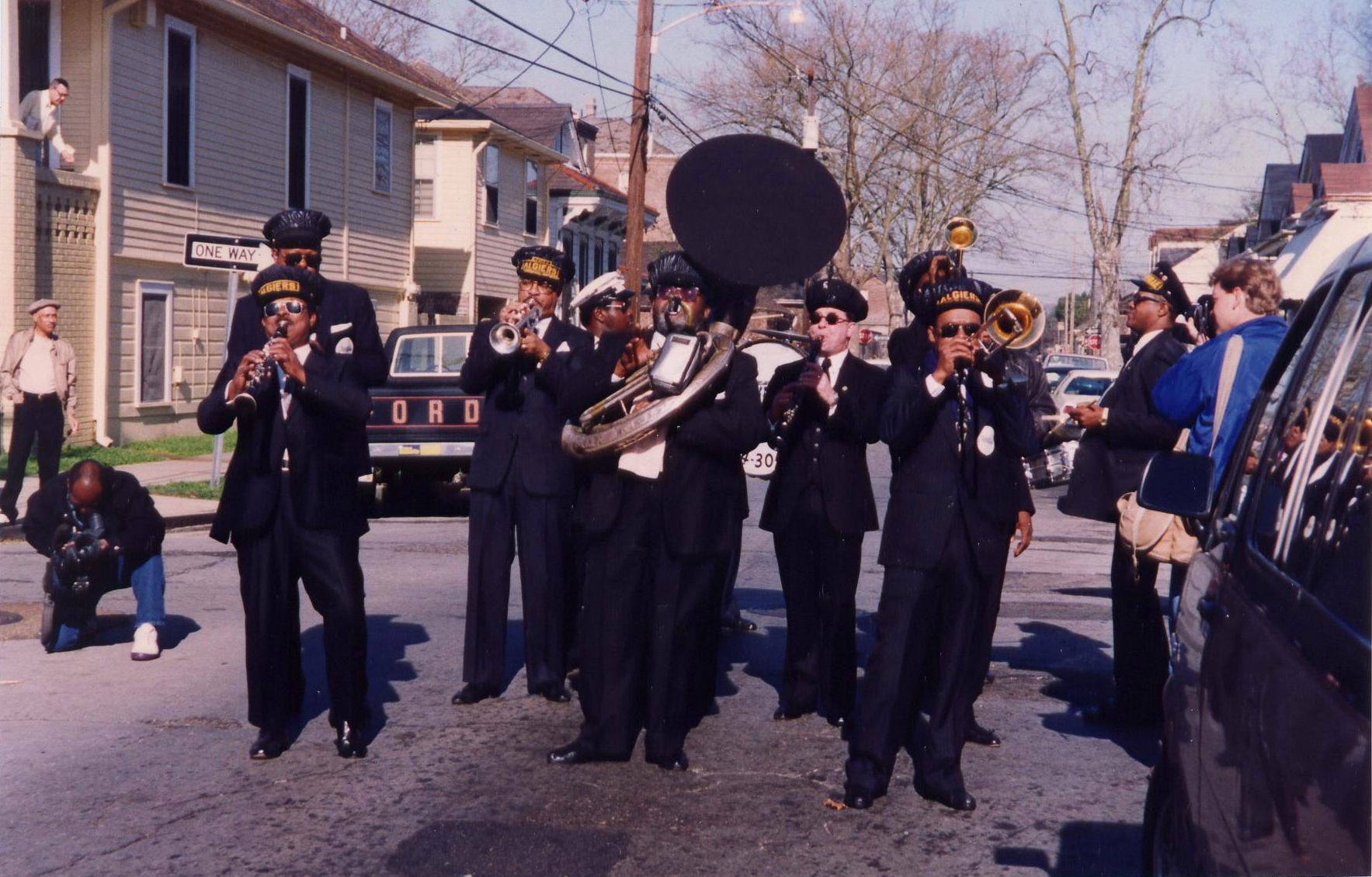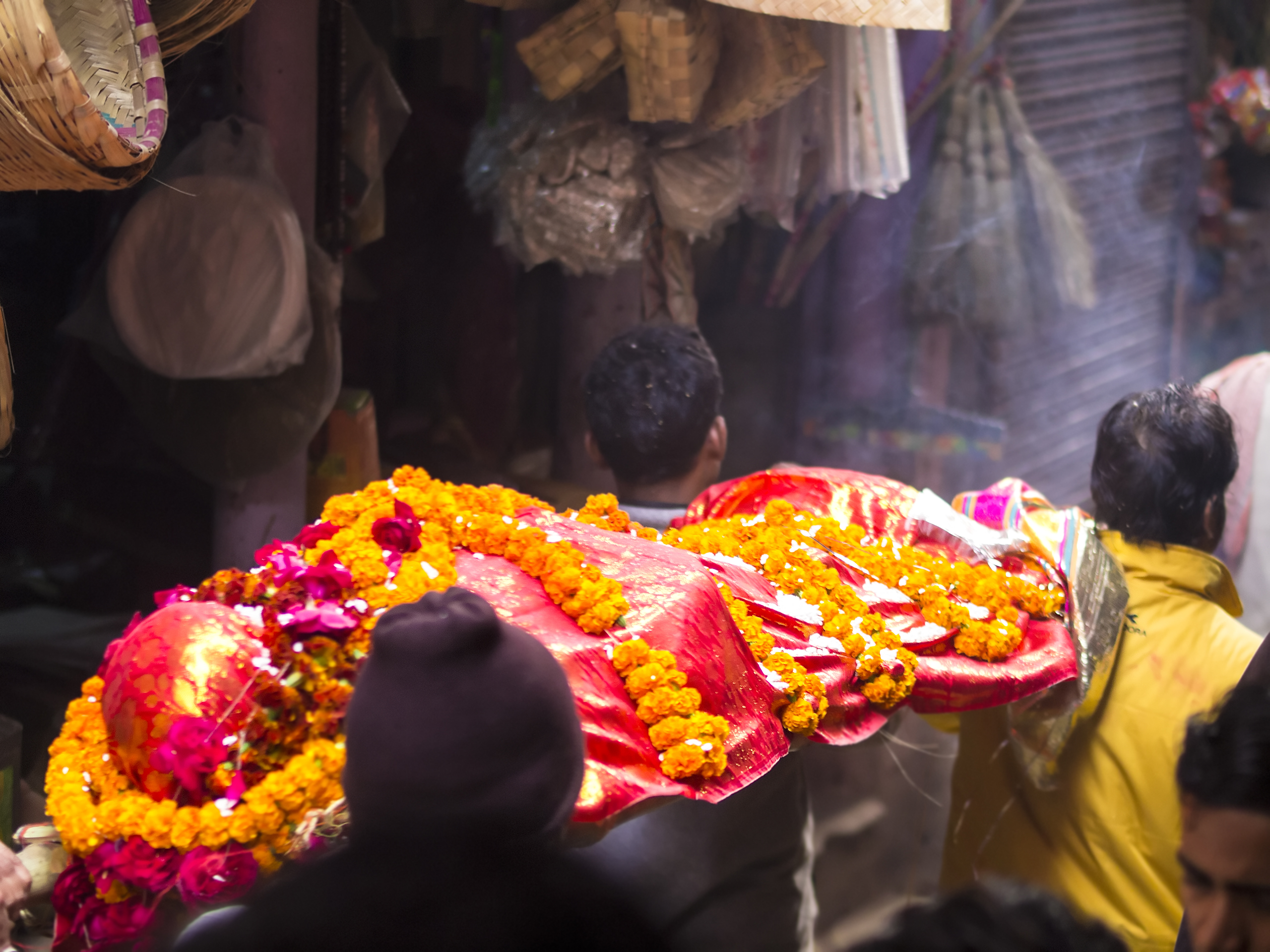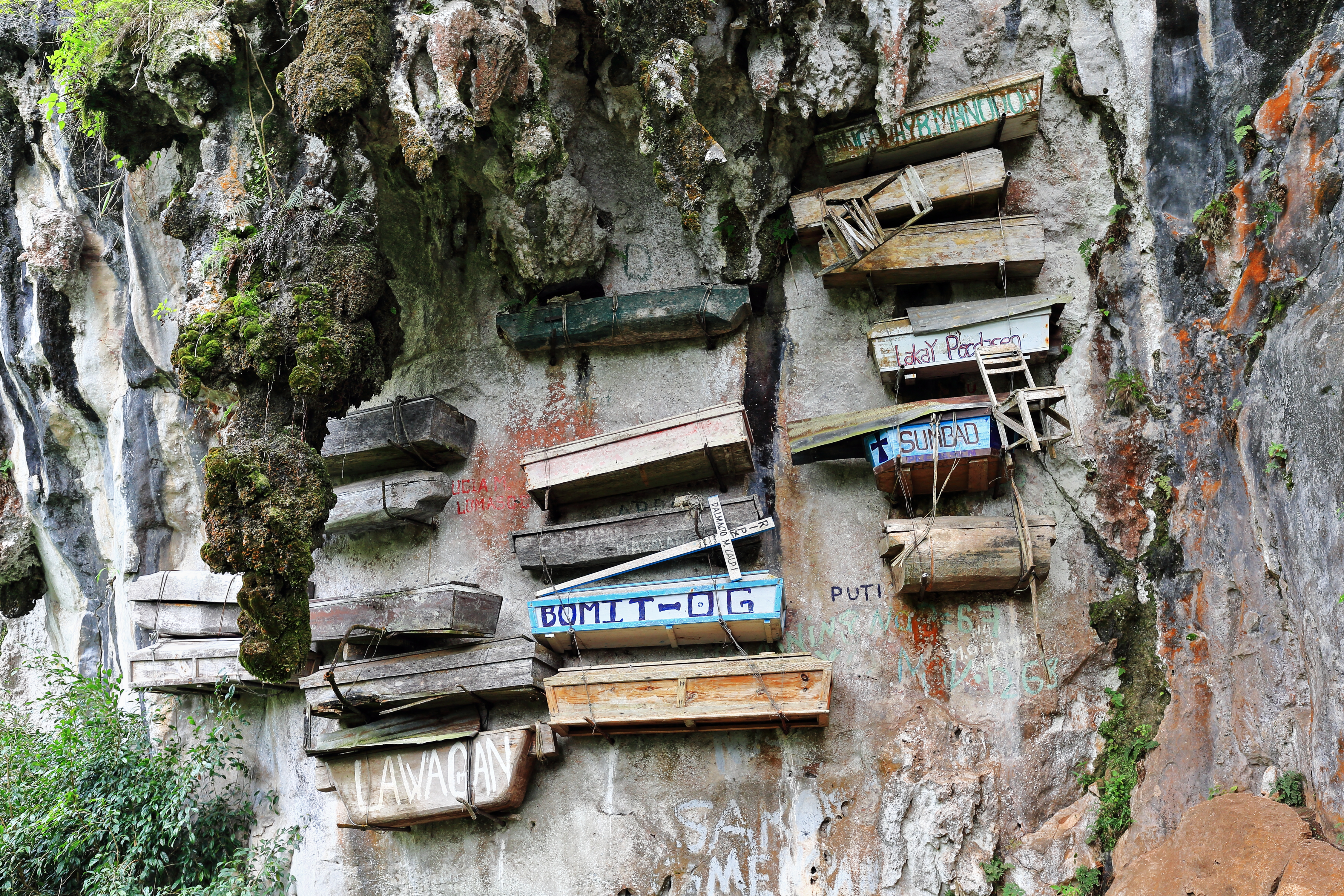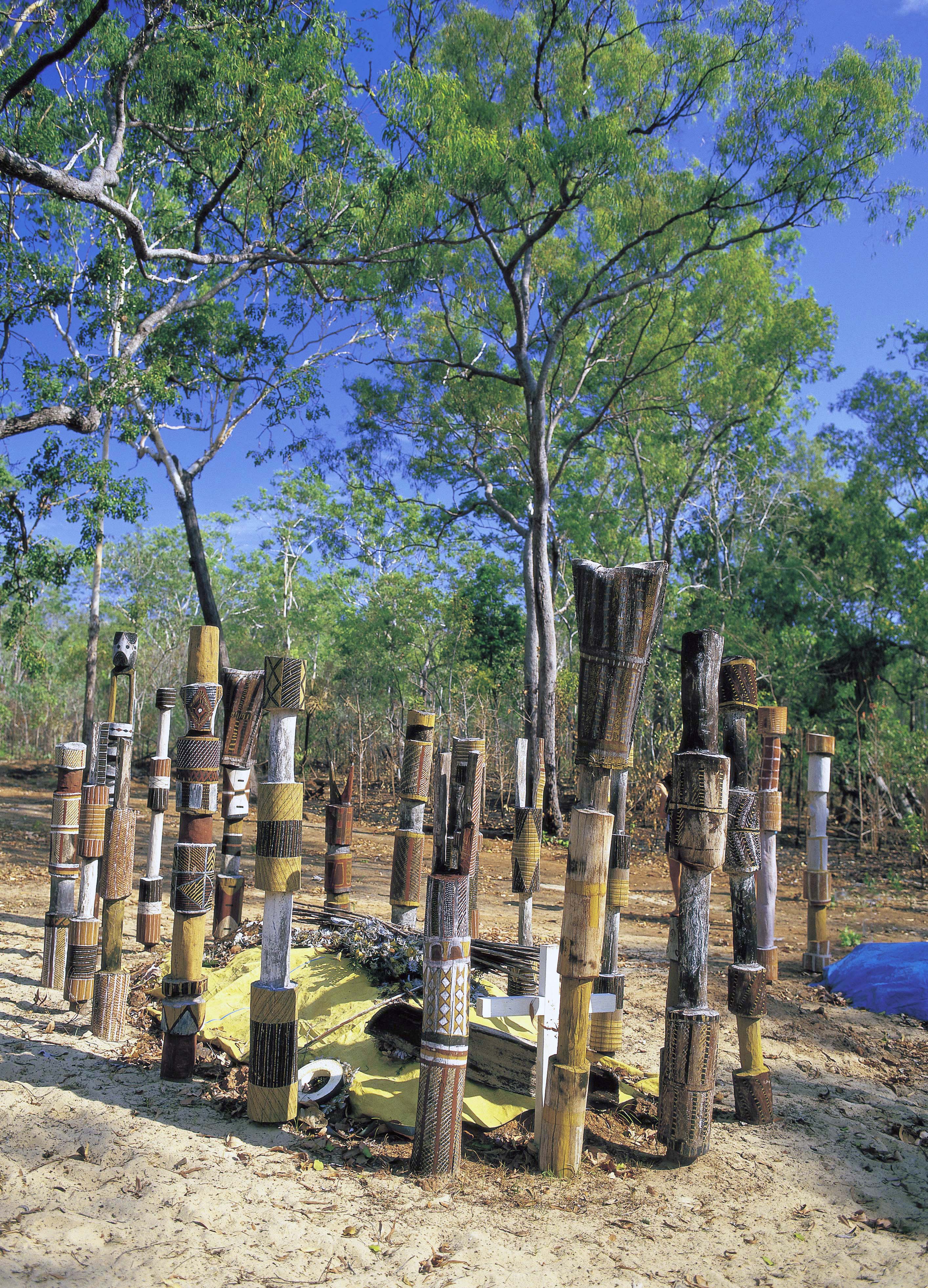Where to find grief support services in NSW
Find grief support in NSW to find solace on your healing journey and guidance on how to support someone...

In most cultures around the world, the saying "death is not the end" is used frequently. While some countries and cultures prefer a traditional ceremony, with loved ones gathered together in a sombre atmosphere, others seek a more vibrant, colourful ceremony, commemorating and celebrating the life of the deceased.
To celebrate or mourn your loved one, everyone wonders how their families will remember them when they're gone. Let's have a look at some of the most fascinating ways other countries and cultures celebrate their dead.
A Jazz Festival - New Orleans funeral
Located alongside the Mississippi River, the people of New Orleans embrace death with streets filled with music - a perfect combination of celebrating a person's life as much as mourning of their death. The tradition stems from a blend of West African, French and African American traditions. The 'Jazz Funeral' commences at a church or funeral home and continues as a jovial procession to the cemetery. A brass band is always present to maintain a vibrate atmosphere.

The band begins their interlude with sorrowful hymns, but on the return from the cemetery they increase the tempo to a more upbeat tune. Cathartic dancing is part of the event, to commemorate the life of the deceased. The people of New Orleans believe that music is as much part of death as it is of life.
The Parade - A Traditional Varanasi (Northern Indian) Funeral
Some cultures colour at a funeral is known to be disrespectful. it is an essential part of a funeral ceremony for other cultures around the globe. This is especially the case for the people of Varanasi, located in Northern India. It is said that Varanasi is a place that welcomes those on the journey to death. Hotels, such as Kashi Labh Mukti Bhavan are said to only accept occupants expected to die within 15 days. To the people of Varanasi, it is normal to witness death close-up, whether it's passing by someone dying in the streets or witnessing a family or friend cross over.

This tradition in Varanasi involves an extravagant parade through the streets with the deceased body dressed in colours that highlight their virtues in life, red for purity or yellow for knowledge. A bit like the jazz festival of a New Orleans funeral, music and chants can be heard from an audience platform called "Harishchandra ghat". Giving onlookers a good view of the flames as the cremation takes place. In an effort to encourage souls to reach salvation, ending the cycle of reincarnation, the bodies are sprinkled with water from the Ganges River and then cremated at the town's main cremation grounds.
All culture as one - A Traditional Filipino Funeral
Catholic culture has become widespread in the Philippines. Before Catholicism, both Hindu and Buddhist beliefs were practiced on the island. These religions still shape Filipino beliefs about life and death. Filipinos have a special view on the afterlife thinking that heaven and hell are divided into different levels. The way a person died (by accident or illness) and the kind of life they lived decides the level they belong in. Funeral customs vary for different ethnic groups in the Philippines but no matter what ethnic group you belong to, all customs serve as examples of how diverse funeral practices can be among the people living in a single country.
In the northwest part of the Philippines, for the Benguet people, funeral traditions consist of blindfolding the deceased and sitting them in front of their house for a total of eight days while reciting the story of the deceased's life and striking bamboo sticks. This is to ensure that the departed loved ones reaches heaven.
The people of Tinguian, the neighbouring traditional group, have funerals that usually last for several weeks. They dress loved ones in the finest clothes and like the Benguet people, the Tinguian people also sit their dead in chairs and will hold a lighted cigarette to their lips.

Trees play a role for Filipino ethnic groups and for the Cavite people, who live near Manila, they choose to bury their dead in a hollowed-out tree trunk. When someone is sick, they choose the tree where they will be buried. The Apayao people, known as the Isnag people live in the north, have a more unique way of saying goodbye by burying their loved ones under their kitchens. The practice is thought to be a sign of love and affection for the deceased.
Most modern-day Filipinos avoid hospitals. The family cares for the sick until they die in the comfort of their own home. The family also comes together to take care of and grieve for their loved ones. For Filipinos, death is not the end. Immediate family and loved ones are always present in big numbers to show support and distract the grieving.
When it comes to dress codes, for women, black is the appropriate attire to wear, accompanied with a black veil. White, grey, or other dark colours are also acceptable at both the wake and funeral showing respect for the family.
A Family Affair - A Traditional Tana Toraja (Eastern Indonesia) Funeral
Located in Eastern Indonesia, Tana Toraja funerals are seen as wild affairs involving the whole community. They can last from days to weeks. Bullfights are held on the third day. Water buffalos are used for these fights, which are then eventually slaughtered as sacrifice.
The Toraja people believe that the deceased's soul will be carried to the afterlife by the sacrificed water buffalos. To the Toraja people, this journey could take years after physical death and for that reason the dead relative are referred to simply as a "person who is sick," or even one "who is asleep."

In Tana Toraja, there are generally two funeral ceremonies, one immediately after death and an second funeral after preparations have been made. The second funerals are usually scheduled during the dry months of July and August, but there are always funerals year-round.
Until the time for the second funeral, the deceased are laid in special rooms in the family home, where they are symbolically fed, cared for and taken out - very much still a part of their relative's lives. Their bodies are often in a modified state until the second funeral ceremony when the families are ready to bury them.
A Lavish death - A Traditional Ghanaian Funeral
A Ghanaian funeral can easily be compared to the New Orleans funerals where the deceased life is remembered and celebrated with music and dance. Just like most West-African countries, funerals are a huge deal in Ghana. Traditional Ghanaian funerals are lavish, elaborate, and often drawn-out affairs. It's common for families to spend more on funerals than weddings. Funerals can take from weeks to months to plan and complete. Ghanaians' underlying views of death and the afterlife vary based on religion. Whether you're Christian, Muslim or you identify as Pentecostal or Roman Catholic, one thing is for certain, the traditional African religious practices will play a role in nearly all funeral ceremonies in Ghana.
When there's a death, Ghanaians tend to announce the passing formally with a written letter or email bulletin. The definition of family alters; a spouse and children suddenly do not qualify as family. This definition is now referred to the extended family which the deceased would have been born into. They would now take up the responsibility to assign the chief mourner, who in turn will take over all the other titles that come with a death.
Funeral services usually take place in several stages. The body is kept in a fridge as there may be disputes about when and where to bury the dead. This indecisiveness can sometimes even lead to court, with injunctions preventing anybody from moving the deceased. The course of the funeral can also be delayed due to the family wishing to give the dead a befitting burial.
Once all preparations are decided on, the main festivities usually take place in the morning on a Saturday, after the burial which can be an all-day affair. Traditional music plays a role in many West African cultures, including the tribes of Ghana. To have a more elaborate ceremony, some people opt to hire the well-known Ghanaian dancing pallbearers, who tend to uplift the mood at funerals with flamboyant coffin-carrying dances.
New outfits all year round - A traditional Famadihana Madagascar Funeral
Famadihana, translated as "dancing with the dead", is a ceremony known as the turning of the bones. The tradition is meant to speed up decomposition and push the spirit of the dead toward the afterlife.
The tradition also allows people to bring forth the bodies of their ancestors from the family crypts, rewrap the corpses in fresh cloth, and rewrite their names on the cloth so they will always be remembered. This tradition is conducted every few years or so. Each time the dead get fresh wrappings, they also get a fresh dance near the tomb while music plays all around.
Community is everything - A Traditional Indigenous Funeral
Indigenous Australian funerals have used both burial and cremation to lay their dead to rest. When a loved one dies in Aboriginal society, specifically in Australia's Northern Territory, elaborate rituals begin.
A smoking ceremony is held in the loved one's living area to drive away their spirit. Next, a feast is held with mourners painted ochre as they partake in food and dance. The body is traditionally placed on top of a platform and covered in leaves as it is left to decompose for several months. Then, once only the bones are left, they would take them and paint them with red ochre. The painted bones could then be buried, placed in a significant location in the natural landscape, or carried with the family as a token of remembrance.

As part of an old traditional Law, once dead, a person's name is not be said to ensure you do not disturb his or her spirit. In modern Australia, people with Aboriginal heritage are more likely to opt for a standard burial or cremation, combined with elements of Aboriginal culture and ceremonies.
No matter how people choose to celebrate or mourn their loved ones, humans are truly no different to one another. They may do things differently, but one thing is for sure, nearly everyone wants their deceased loved ones to be buried in comfort and remembered in a positive light.
By Aminah Tejan
Sources: